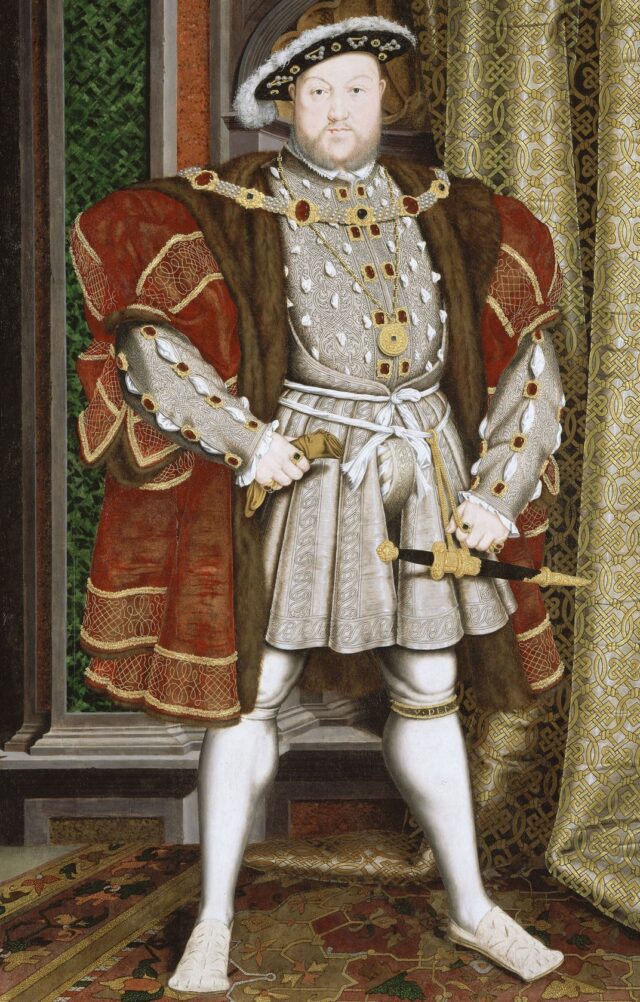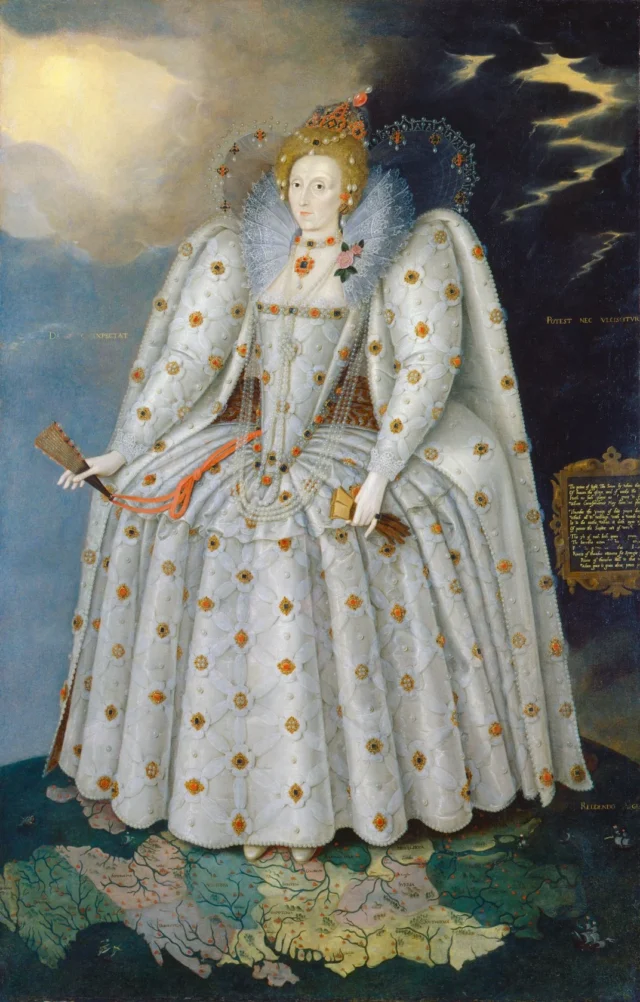From Smithsonian Magazine:
In a gallery at the Metropolitan Museum of Art in New York, paintings of a father and daughter hang face to face. Larger than life, the monumental portraits present competing conceptions of royal power. The father, Henry VIII, looks directly at the viewer, conveying aggression through his wide stance, bulging leg muscles and excessively padded clothing. The daughter, Elizabeth I, is more coy, refusing to meet the viewer’s gaze and relying on layers of symbolism to allude to the strength of her rule.
Painted decades apart by artists of different generations, Elizabeth’s likeness is clearly in conversation with Henry’s. “Her whole body has been padded and shaped to create a silhouette that echoes … her father’s, and she’s actually wearing a series of ‘truelove’ buttons that she inherited from [him],” says Adam Eaker, a curator in the Met’s European paintings department. “She’s working within a very different idiom as an unmarried, childless woman to create an iconography that will position her as the heir to her father’s throne.”


Both of these works—a portrait of Henry by the workshop of Hans Holbein the Younger and Marcus Gheeraerts the Younger’s Ditchley Portrait of Elizabeth—testify to the rapidly evolving artistic landscape of Tudor England. From Henry VII’s usurpation of the throne in 1485 to the death of Elizabeth in 1603, Tudor monarchs relied on paintings, sculptures, tapestries and other art forms to legitimize their nascent dynasty. “The Tudors: Art and Majesty in Renaissance England,” on view at the Met through January 2023, showcases this opulent era through more than 100 objects, including a Holbein sketch of Anne Boleyn and an intimate portrait miniature of one of Elizabeth’s favorite courtiers.
“The highest caliber of artistry is being acquired and shared in the Tudor courts,” says Elizabeth Cleland, a decorative arts curator at the Met. “[It was] really this wonderful moment when they are soaking up as much as they possibly can, from travel and trade going to Europe and beyond.”
. . . .
Co-curated by Cleland and Eaker, “The Tudors” doesn’t simply provide a visual “who’s who” of 16th-century England. Instead, the show examines how the eponymous rulers strategically used art to shape their image both at home and abroad. From Henry VIII’s attempts to outdo French king Francis I, whose court boasted such renowned artists as Leonardo da Vinci, to Elizabeth I’s development of portraits that asserted feminine authority in a male-dominated world, the Tudor period’s culture was inextricable from its political intrigue.
Link to the rest at Smithsonian Magazine
Here’s a link to the Metropolitan Museum of Arts’ page for this exhibit.
PG notes that the Met not only provides lovely photos of the individual works on its page, it also includes both written and audio discussions of each painting in the exhibit.